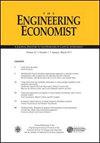Bandwagon Investment Equilibrium of Investment Timing Games
IF 1.2
4区 经济学
Q4 BUSINESS
引用次数: 0
Abstract
Abstract Empirical research reports various behaviors exhibited by investors, including voluntary concurrent investments, which are called bandwagon investments. However, the current theoretical understanding is still limited in explaining under which condition the investment bandwagon effect occurs. We investigate the closed-loop subgame perfect equilibrium of an investment timing game that describes voluntary simultaneous investments. We show that investors are on the investment bandwagon when (1) they expand their current capacities and (2) the second mover’s additional profit rate exceeds a threshold value. Otherwise, investors invest sequentially. This result explains the frequently observed investment herd effect.投资时机博弈的从众投资均衡
实证研究报告了投资者表现出的各种行为,其中包括自愿同步投资,即从众投资。然而,对于投资从众效应在什么条件下会发生,目前的理论认识仍然有限。研究了一种描述自愿同步投资的投资时机博弈的闭环子博弈完全均衡。我们表明,当(1)投资者扩大其现有产能,(2)后发者的额外利润率超过阈值时,投资者就会加入投资潮流。否则,投资者按顺序投资。这一结果解释了经常观察到的投资羊群效应。
本文章由计算机程序翻译,如有差异,请以英文原文为准。
求助全文
约1分钟内获得全文
求助全文
来源期刊

Engineering Economist
ENGINEERING, INDUSTRIAL-OPERATIONS RESEARCH & MANAGEMENT SCIENCE
CiteScore
2.00
自引率
0.00%
发文量
14
审稿时长
>12 weeks
期刊介绍:
The Engineering Economist is a refereed journal published jointly by the Engineering Economy Division of the American Society of Engineering Education (ASEE) and the Institute of Industrial and Systems Engineers (IISE). The journal publishes articles, case studies, surveys, and book and software reviews that represent original research, current practice, and teaching involving problems of capital investment.
The journal seeks submissions in a number of areas, including, but not limited to: capital investment analysis, financial risk management, cost estimation and accounting, cost of capital, design economics, economic decision analysis, engineering economy education, research and development, and the analysis of public policy when it is relevant to the economic investment decisions made by engineers and technology managers.
 求助内容:
求助内容: 应助结果提醒方式:
应助结果提醒方式:


